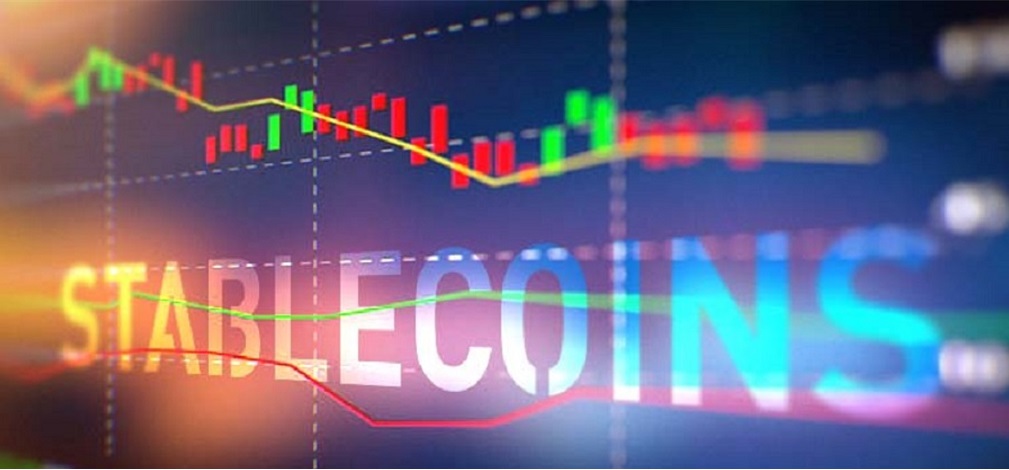Stablecoins: A case study in irony and reverse contagion

True resilience demands alternative financial solutions
an article by Nick Jones
As we contemplate the fallout from the demise of Silvergate Bank, followed by Silicon Valley Bank (SVB) and Signature Bank – the second and third largest bank failures in US history – the coverage of events isn’t without its ironies for those who have been following the ups and downs of the digital asset sector.
Central bankers continue talking earnestly about systemic risks from crypto and other digital assets, yet we have just witnessed the collapse of a regulated US bank jeopardising the backing of USD Coin (USDC) – a fiat-collateralised stablecoin pegged to the US dollar.
Cue the irony of reverse contagion, where distress from the traditional financial system threatened crypto stability, with USDC – a staple of the ‘DeFi’ ecosystem – plunging to a record low of 86 cents on news that USDC issuer Circle had $3bn+ of USDC reserves held at SVB.
That might have been irony enough in itself if not for the compounding factor that fear and panic initiated and transmitted from the traditional finance world to crypto was then amplified by a further characteristic of the old world: banks being closed over the weekend.
While speculators ran amok trading the 24/7 USDC secondary markets, fiat redemptions remained locked, triggering a weekend of extreme volatility in markets worldwide ‘waiting for Monday morning’, and the decisions of the few on which the markets have become so accustomed to depend.
A disturbing and deeply ironic situation then to see market participants trading out of USDC – the transparent US-issued stablecoin meant to do everything by the book – and into other stablecoins, including Tether (USDT), which have built a reputation on being non-transparent and jurisdictionally hard to pin down.
When investors run from an asset that should have represented the safest backing of all (1-to-1 reserves held in cash in US banks along with short-term US government debt), we can draw our own conclusions about the robustness of the financial system.
It makes it all the more surprising that the view that seems to have been reached in certain quarters – and headlines – is that this is a crypto or tech-related failing: poor client choice and poor risk management that is isolated from the rest of the US banking system.
Let us be absolutely clear, there were undeniable risk management deficiencies in the SVB case. But leaving it at that is to shroud the contributing role of central economic planning and interest rate policy.
SVB was a bank buying long-term securities in a very low-interest rate environment – at a time the Fed gave no indication it would hike – and then finding itself offside in a comparatively high-interest rate environment and a need to sell at loss to meet mass withdrawal demands: duration mismatch followed by a liquidity crunch.
Complacently late to respond to the ‘transitory inflation’ narrative, and unprecedentedly aggressive in hiking at record pace thereafter, this was the Fed ‘hiking until something breaks’ and an early casualty of reactive, crisis-driven policy.
Need we be reminded, the existing banking system and the fractionalised reserve model is a confidence game increasingly short on confidence in a digital world in which information – and money – flows faster than ever.
And now shares in many European banks are being pummelled as the panic spreads, with UBS agreeing an ‘emergency rescue’ of Credit Suisse. As ever, it is the population at large that pays the price for decision-makers’ missteps.
Digital assets and decentralised finance were conceived with the idea there could be an alternative to this system that relies on deliberately different structures – a system over time independent of central economic planning and dependencies.
This perhaps explains why Bitcoin was up 10 per cent as bank stocks across the board cratered and were halted for trading following the SVB and Signature Bank collapses.
Despite the opportunities provided by alternative finance, it’s concerning that the response seems to be to double down on the traditional financial system, even as it shows its fragilities, whilst clamping down on any crypto activity that touches the existing financial system.
Silvergate, Signature and SVB were some of the key financial institutions linking ‘crypto’ and ‘tradfi’ worlds.
In the fallout of recent events, partnerships have been severed, fiat on-ramps and off-ramps cut, and access to banking services for cryptoasset businesses made more difficult than ever. This is contrary to supporting alternative finance, and instead a misguided case of retrenching to a threatened legacy system.
Shutting off the conduits between traditional finance and cryptosystems on an implicit assumption that ‘old system = good, safe/new system = bad, risky’ makes less and less sense.
The risks are on both sides, and unique to the operating characteristics of each. Attempts to coerce and control do not stop decentralised finance: they simply drive the financial worlds further apart and prevent it from any hope of integrating with what has gone before.
A resilient future financial system isn’t resistant to new financial ideas and structures, it is supportive of them. It dares to integrate new ideas where they provide genuine value. It remains open to all innovations, including where they may present new ways of doing things that complement, or even make obsolete, what has come before.
The fallout from the SVB and Signature Bank scenarios shows the need to be much bolder in reimagining financial systems for the better – and, if recent events are any guide, there are more people who believe that than ever before.
Dariusz Mazurkiewicz – CEO at BLIK Polish Payment Standard
Banking 4.0 – „how was the experience for you”
„To be honest I think that Sinaia, your conference, is much better then Davos.”
Many more interesting quotes in the video below:












